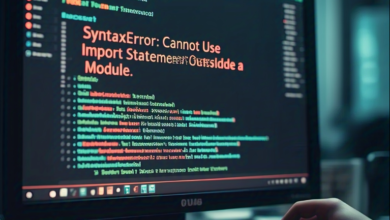Translating Aksara Jawa to Indonesian: A Cultural and Linguistic Bridge

Translating Aksara Jawa to Indonesian, or the Javanese script, is an integral part of Indonesia’s cultural heritage. For centuries, it has been used to write the Javanese language, which is spoken by millions on the island of Java. While the Javanese script is not as widely used today, it still plays a crucial role in historical, cultural, and ceremonial contexts. Translating Aksara Jawa to Indonesian (using the Latin alphabet) serves not only as a way to preserve this ancient script but also to make it accessible to a broader audience, particularly in a rapidly modernizing Indonesia.
The Structure of Aksara Jawa
Aksara Jawa is a syllabic script, meaning each character typically represents a syllable, rather than an individual letter. This is a key difference from the Latin alphabet, which represents individual phonetic sounds (consonants and vowels). Aksara Jawa consists of base characters, vowels, and other marks that modify the pronunciation of the base characters. This structure requires translators to have a deep understanding of both Javanese and Indonesian to accurately translate words while preserving their original meanings and sounds.
Challenges in Translating Aksara Jawa to Indonesian
One of the main challenges in translating Aksara Jawa to Indonesian is the difference in phonetics between the two languages. Javanese contains sounds and syllabic structures that do not always align perfectly with the sounds of Indonesian. Additionally, some letters in Aksara Jawa have no direct equivalent in Indonesian, requiring translators to find appropriate substitutes or use descriptive translations. For example, Javanese has certain vowel sounds that are not found in Indonesian, making it necessary to adapt the translation without losing the essence of the original word.
Another difficulty arises from the presence of diacritics in Aksara Jawa. These marks play an essential role in modifying the pronunciation of syllables and can significantly alter the meaning of words. Translating these marks accurately is crucial to preserving the integrity of the translation. Moreover, some of these diacritics may have different functions in Javanese compared to their role in Indonesian, adding another layer of complexity to the translation process.
The Importance of Cultural Context in Translation
Translating Aksara Jawa is not simply about converting words into another script. The cultural context is vital when translating texts written in Javanese script. Aksara Jawa is often used in ceremonial and literary contexts, and many of the texts written in this script carry historical, philosophical, and cultural meanings that may not be easily conveyed in modern Indonesian. Translators must be aware of these cultural nuances to ensure that the translation remains faithful to the original intent and tone of the text. This can involve understanding the historical and philosophical significance of certain words or phrases and choosing equivalent Indonesian terms that capture these subtleties.
Technological Advancements in Translating Aksara Jawa
In recent years, technology has played a significant role in translating Aksara Jawa into Indonesian. Software tools, online platforms, and databases have been developed to assist with the conversion of Javanese script into the Latin alphabet. These tools can automatically recognize Aksara Jawa characters and convert them into their corresponding Latin letters. However, while technology has made the translation process faster and more efficient, it is not without limitations. Automatic translations often lack the cultural and contextual understanding that a human translator can provide, which is why experts in both languages are still essential for accurate translations.
Educational Efforts to Preserve Aksara Jawa
With the decline in the use of Aksara Jawa in everyday life, there has been a growing interest in teaching the script to younger generations. Educational institutions across Indonesia, particularly in Java, are reintroducing Aksara Jawa into their curricula to ensure that students learn about this vital part of their cultural heritage. By understanding the script, students not only gain linguistic skills but also develop a deeper appreciation for the history and traditions of their ancestors.
This educational approach also plays a crucial role in facilitating the translation of Aksara Jawa into Indonesian. As more people become proficient in reading and writing in Javanese script, the demand for translations increases. Educational programs dedicated to Aksara Jawa help produce future translators who can carry on the work of preserving and translating ancient texts.
The Role of Aksara Jawa in Modern Indonesia
While Aksara Jawa is no longer in widespread use for daily communication, it continues to hold a special place in Indonesian culture. The script is often used in traditional ceremonies, art, and literature. Additionally, it is featured in historical documents, inscriptions, and cultural records, many of which are key to understanding Indonesia’s past. Translating Aksara Jawa to Indonesian makes these important texts accessible to a broader audience, helping to preserve the cultural heritage of Indonesia and its diverse linguistic landscape.
Moreover, as Indonesia continues to modernize and embrace its cultural diversity, there is a renewed interest in the country’s indigenous scripts. Aksara Jawa, with its unique beauty and historical significance, is being rediscovered by people who are eager to reconnect with their cultural roots. This has led to a revival of interest in the script, and the translation of Aksara Jawa into Indonesian serves as a way to bridge the gap between traditional and modern Indonesia.
The Future of Aksara Jawa Translation
Looking ahead, the translation of Aksara Jawa into Indonesian will likely continue to grow in importance as more people seek to understand and preserve Indonesia’s cultural heritage. As technological tools improve and educational initiatives expand, the process of translating Aksara Jawa will become more efficient and accessible. However, the need for human expertise will remain essential to ensure that translations are accurate, culturally sensitive, and faithful to the original meaning of the texts.
Furthermore, the rise of digital platforms and online resources will make Javanese script texts and their translations more accessible to people around the world. By digitizing these texts and providing reliable translations, scholars and cultural institutions are making it easier for Indonesians, and even non-Indonesians, to explore the rich cultural history embedded in Aksara Jawa.
Conclusion
Translating Aksara Jawa to Indonesian is a complex and important process that plays a crucial role in preserving Indonesia’s cultural heritage. The challenges of phonetic differences, diacritics, and cultural context require skilled translators who can navigate the intricacies of both languages. As Indonesia moves forward in a modernizing world, the translation of Aksara Jawa into Indonesian will continue to serve as a vital link between the past and the present, ensuring that the country’s rich linguistic and cultural traditions remain accessible to future generations.
Read More 123movie





